1) The header said that Summer Breaks Lead to Better Commutes but then I see weekdays on columns. So I was wondering what it would look like if weekdays and months were swapped, so that I could more easily see if the commute was better in the summer.
2) Super nit-picky, but I wanted to see what the summary above the viz looked like without the lines.
3) As I was playing around, I saw the tool tips, which are based on the defaults. Personally, I love to customize tool tips.
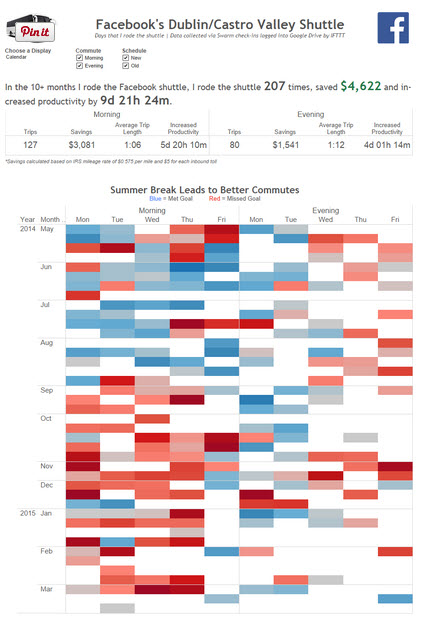
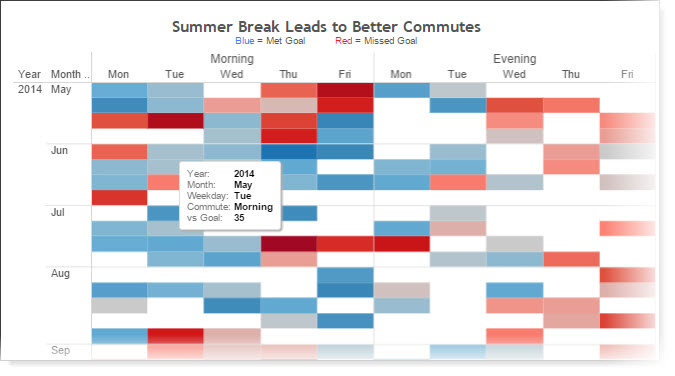
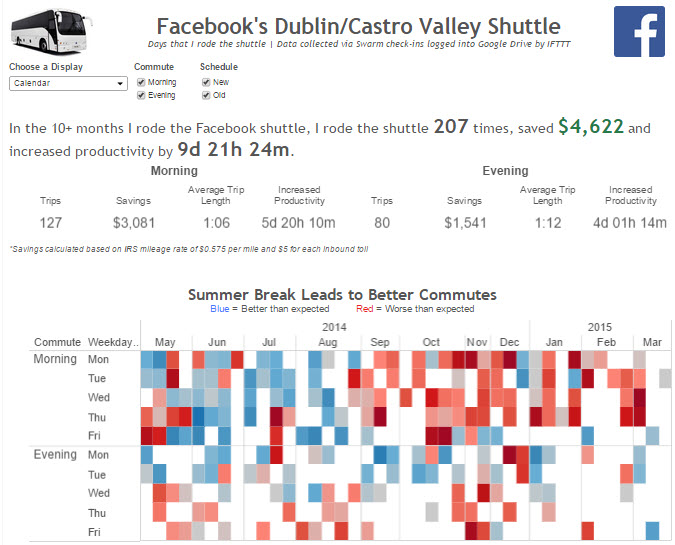
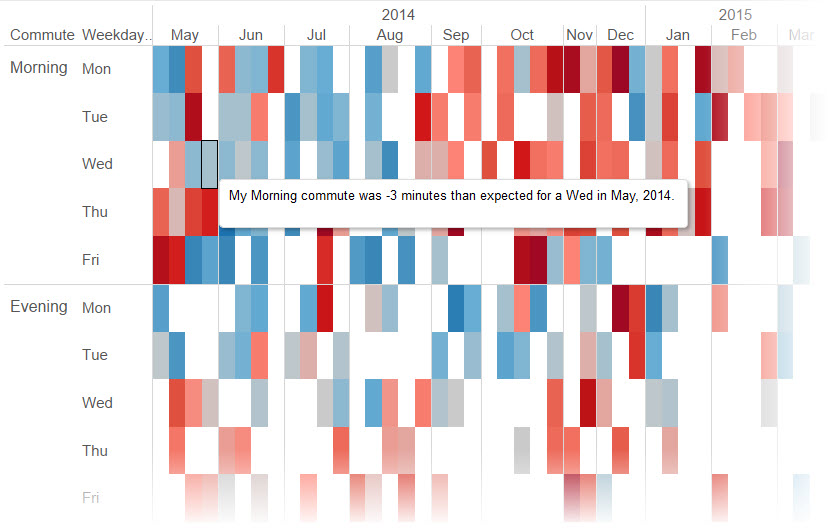
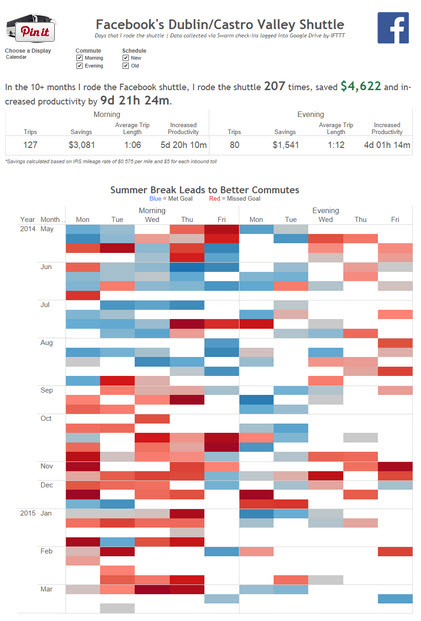
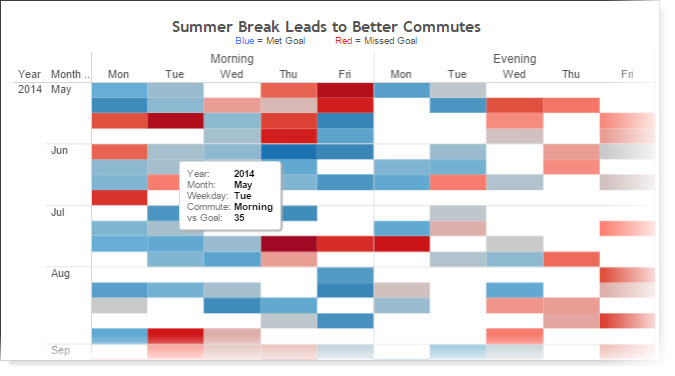
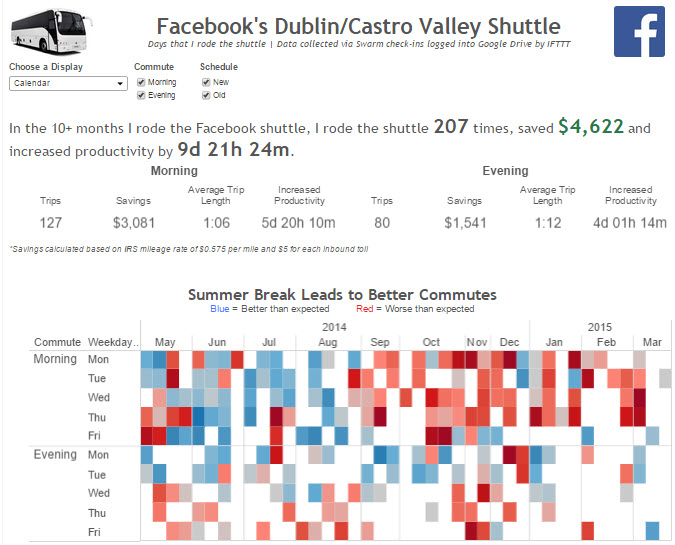
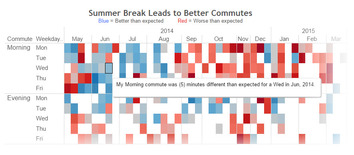
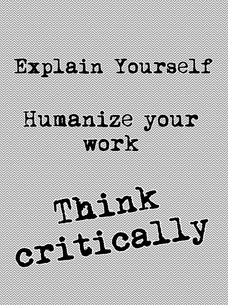
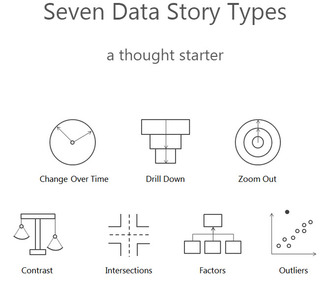
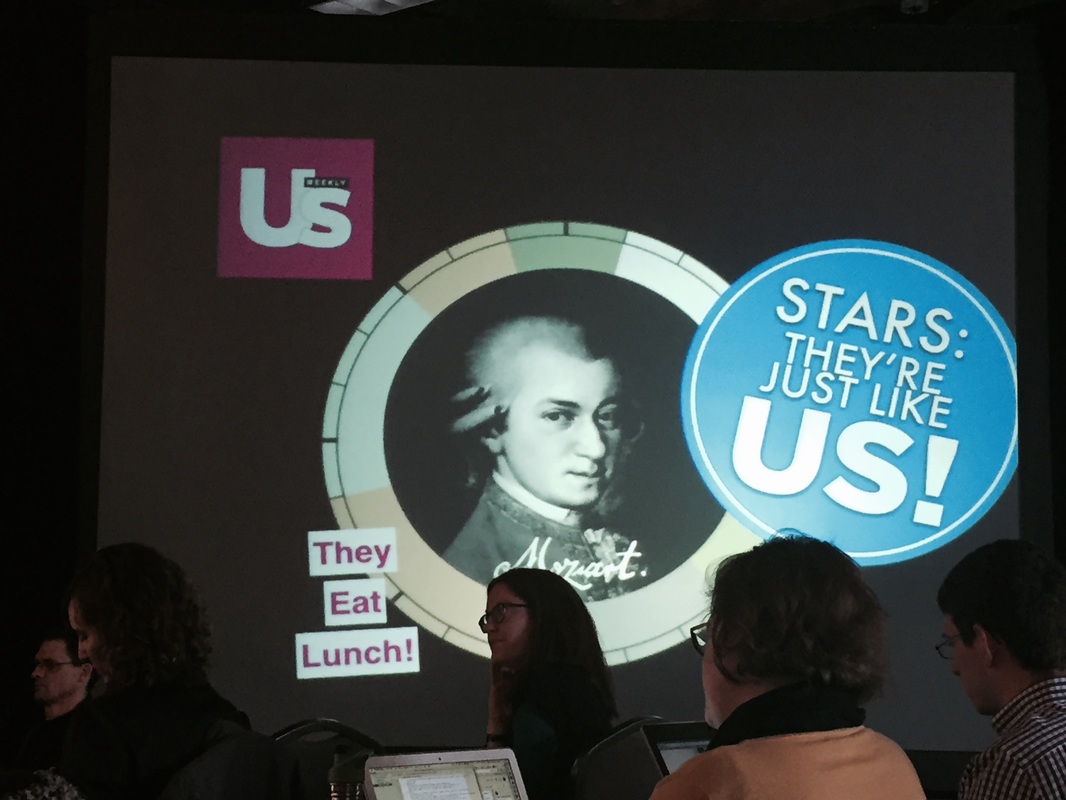
 RSS Feed
RSS Feed
